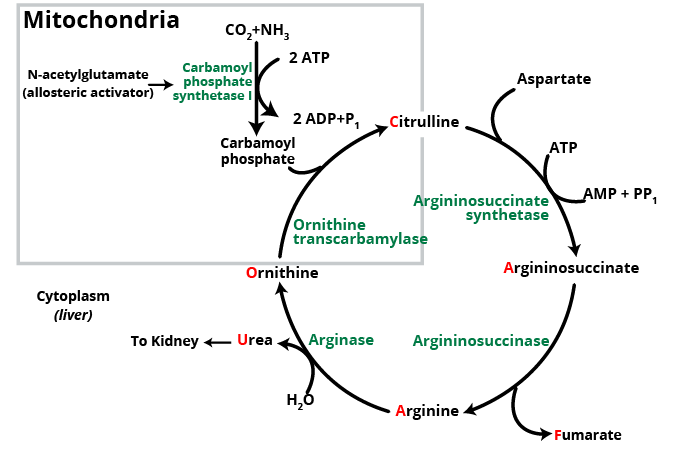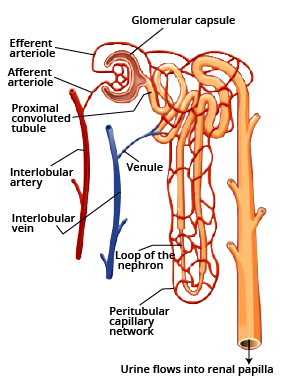Excretory Products and their Elimination Class 11 important questions with answers PDF download
FAQs on CBSE Important Questions for Class 11 Biology Excretory Products and their Elimination - 2025-26
1. What are the most frequently asked important questions on 'Excretory Products and Their Elimination' for Class 11 Biology CBSE 2025-26 exams?
- Define glomerular filtration and mention where it occurs in the nephron. (1 mark, 2025-26)
- Differentiate between ammonotelism, ureotelism, and uricotelism with examples. (3 marks, 2025-26)
- Explain the mechanism of urine concentration in humans, emphasizing the countercurrent mechanism. (5 marks, 2025-26)
- Discuss the structure and function of the renal corpuscle. (3 marks, 2025-26)
- List two metabolic disorders diagnosed by urine analysis. (1 mark, 2025-26)
2. How can students maximize their marks in Class 11 Biology Chapter 16 'Excretory Products and Their Elimination' based on previous CBSE exam patterns?
- Focus on important questions repeatedly asked in board exams, such as definitions, differences, and diagram-based Qs.
- Pay attention to application-based and HOTS questions as they often carry higher weightage (3-5 marks).
- Revise all concepts around urine formation, regulation of kidney function, types of excretion (ammonotelic, ureotelic, uricotelic), and structure of nephron.
- Practice previous year important questions and sample papers as per CBSE 2025-26 marking scheme.
3. What is the significance of the countercurrent mechanism in the concentration of urine as per Class 11 CBSE important questions?
The countercurrent mechanism involves the arrangement of the loop of Henle and vasa recta in close parallel and opposite directions. This creates an osmotic gradient in the medulla, allowing maximal reabsorption of water from filtrate and hence concentrating the urine. The ascending limb is impermeable to water but allows ion transport, while the descending limb is permeable to water, facilitating this gradient as per CBSE 2025-26 syllabus trends.
4. Why do terrestrial animals rarely show ammonotelism? [Frequently Asked in HOTS & Board Exams]
Terrestrial animals are not ammonotelic because ammonia is highly toxic and requires large amounts of water for excretion, which is not feasible for water conservation. Instead, they convert nitrogenous wastes to urea or uric acid (ureotelism/uricotelism), both of which are less toxic and require less water, a critical survival adaptation emphasized in CBSE important questions.
5. List three high-order thinking (HOTS) important questions from 'Excretory Products and Their Elimination' for Class 11 CBSE in 2025-26.
- Justify how the structure of different types of nephrons (cortical vs juxtamedullary) supports their specific roles in urine formation.
- Explain the physiological significance of the urea cycle in humans and its integration with other metabolic pathways.
- If a patient's glomerular filtration rate drops significantly, what physiological consequences might occur? How can this be detected clinically?
6. How does the hormone ADH regulate water balance according to important Class 11 Biology exam questions?
ADH (antidiuretic hormone, also called vasopressin) increases the permeability of the distal convoluted tubule and collecting duct to water, promoting reabsorption when the body is dehydrated. This hormonal control ensures minimal water loss in urine, a staple concept in Class 11 Biology CBSE important questions.
7. Compare and contrast the excretory products of reptiles, birds, and mammals, as typically covered in expected 2025-26 board questions.
- Reptiles and birds excrete uric acid (uricotelism), minimizing water loss because uric acid is insoluble and excreted as a paste or solid.
- Mammals primarily excrete urea (ureotelism), which is soluble and requires less water than ammonia, but more than uric acid.
- This adaptation helps terrestrial species conserve water, a classic comparative question in CBSE Class 11 Biology.
8. What is glomerular filtration rate (GFR) and why is it important? [CBSE important question, 2025-26]
Glomerular filtration rate (GFR) is the volume of filtrate produced per minute by both kidneys. In healthy humans, it ranges from 100–130 mL/min. GFR is a key indicator of kidney function and is commonly tested to diagnose renal health or disease, a vital point in Class 11 exam readiness.
9. Identify and explain two metabolic disorders that can be diagnosed through urine analysis, relevant to important CBSE Class 11 questions.
- Glycosuria: Presence of glucose in urine, often indicating diabetes mellitus.
- Ketonuria: Detection of ketone bodies in urine, associated with uncontrolled diabetes or severe fasting/starvation.
10. Explain the structural and functional differences between Renin and Rennin, often confused in important board questions.
- Rennin is an enzyme produced in the stomach aiding in milk protein digestion; it is released in an inactive form.
- Renin is a hormone-enzyme released by the juxtaglomerular cells of the kidney, regulating blood pressure via the renin-angiotensin system; released in active form.
11. What is the role of vasa recta in the human kidney, as per important Class 11 Biology questions?
The vasa recta are U-shaped capillaries surrounding the loop of Henle, crucial for maintaining the osmotic gradient in the medulla by reabsorbing water and ions. They help in urine concentration, a prominent Class 11 Biology important question theme.
12. Describe the process and significance of dialysis for patients with renal failure, a key application-based exam question.
Dialysis is an artificial blood filtration technique used when kidneys fail. Blood is passed through a semipermeable membrane in the machine, allowing waste products and excess ions to diffuse out, mimicking glomerular filtration. Dialysis maintains waste removal and electrolyte balance, saving lives of chronic kidney patients—a core HOTS application for CBSE 2025-26.
13. List and briefly describe three main processes involved in urine formation as per important CBSE exam questions for 2025-26.
- Glomerular filtration: Pressure-driven filtration of blood plasma in the glomerulus into Bowman's capsule, excluding large proteins.
- Tubular reabsorption: Selective reabsorption of water, glucose, amino acids, and ions from filtrate back into blood, mostly in the proximal convoluted tubule.
- Tubular secretion: Additional removal of substances like potassium, hydrogen ions, and ammonia into the tubules for excretion.
14. Why does urine sometimes contain abnormal components such as proteins or blood, and what does this indicate?
The presence of proteins or blood in urine indicates damage to the filtration barrier in the glomerulus, as seen in conditions like glomerulonephritis or severe kidney disease. This is a red-flag clinical sign prompting further medical evaluation.
15. How does the excretory role of the liver complement the kidney's function, as per advanced important CBSE questions?
The liver aids excretion by converting toxic ammonia to urea (via the urea cycle), metabolizing drugs/hormones, and secreting waste products like bilirubin into bile. These substances are either excreted in urine (via kidneys) or feces (via digestive tract), demonstrating integrated waste management in the body, a HOTS question in CBSE exams.



























